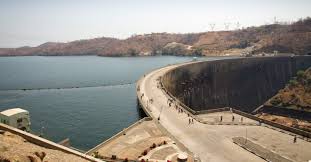Rising water levels boost Kariba generation capacity
ZIMBABWE is poised to generate more electricity from Kariba Dam, which has seen water levels rising to 480,76 metres due to good rains.
The Kariba Hydro-Power Station is now the dominant source of electricity in Zimbabwe, generating above 800 megawatts daily, according to the Zimbabwe Power Company (ZPC).
The giant Hwange Thermal Power Stations is struggling to operate at full capacity due to perennial technical faults linked to ageing equipment. The small thermals in Bulawayo, Harare and Munyati are also crippled by ageing equipment.
Authorities have said they will maintain annual water allocations of 30 billion cubic meters for power generation sufficient to produce an average 800MW.
The Zambezi River Authority (ZRA) set annual water allocations of 30 billion cubic metres (30 cubic kilometres) each for power generation at Kariba South and Kariba North power stations.
This implies that Zimbabwe’s power utility, Zesa and its Zambian counterpart, Zesco can each vary their output, so long as they remain within the ration.
For instance, Zesa could push Kariba South to its full 1 050MW during peak hours, but cut right back to about 100MW in the middle of the night to maintain the average.
In a latest update, ZRA said lake levels recorded at Kariba Dam as of 2 March 2021 were expected during this time of the year and have continued rising due to increased rainfall activity in the Kariba catchment.
“From the last update made on 19th January 2021, the lake levels have increased by a total of 3,96 metres from the lake level of 476,80m recorded on 19 January to a lake level of 480,76m recorded on 2 March 2021.
“This has placed the lake level at 5,26m above the minimum operating level (MOL) of 475,50m,” said the authority.
The lake level recorded on 2 March 2021 translates into usable storage or live storage of 24,31 billion cubic meter (BCM).
“Based on the meteorological authorities’ projections of normal to above normal rains for the ongoing 2020/2021 rainfall season, the authority has maintained the 30BCM of water allocated for power generation operations at Kariba for the year 2021,” said ZRA.
Last year on the same date, the lake level was lower at 477,17m with 7,48BCM of usable water or 11,55 percent live storage. The authority said it continues to monitor the evolving hydrological situation under the Kariba catchment.
“This is being undertaken, taking cognisance of the increased rainfall activity, and resulting water levels at Kariba Dam, with the view of making consideration regarding the possibility of revising the water allocation at Kariba dam,” he said.
In line with the seasonal forecast released by the 24th Annual Southern Africa Regional Climate Outlook Forum (SARCOF-24) in August 2020, the bulk of the Sadc region in general and the Kariba catchment in particular, continues to receive normal to above-normal rainfall for the first quarter of 2021.
Accordingly, the Zambezi River as monitored at the authority’s gauging stations has continued to record an increase in flows.-chronicle.c.zw











